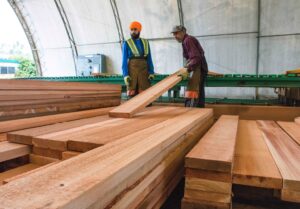 Major softwood producers with head offices in Canada say they have accounted for more than half of the growth in capacity in the US South over the past decade, highlighting their American investments as the Trump administration investigates lumber imports. The US South appeals to forestry companies because of the region’s abundant timber, the Canadian government said in a 57-page filing this month to the US Department of Commerce in a bid to avert potential tariffs. …In seeking to stave off tariffs, the Canadian government and several producers from Canada believe that the foray into the US South should be viewed as evidence of them being aligned with the Trump administration’s “America First” trade and investment agenda. …However, the U.S. Lumber Coalition is arguing that new tariffs are necessary. …Canadian producers are worried that if new lumber tariffs hit 25 per cent… total levies could reach nearly 60%. [to access the full story a Globe & Mail subscription is required]
Major softwood producers with head offices in Canada say they have accounted for more than half of the growth in capacity in the US South over the past decade, highlighting their American investments as the Trump administration investigates lumber imports. The US South appeals to forestry companies because of the region’s abundant timber, the Canadian government said in a 57-page filing this month to the US Department of Commerce in a bid to avert potential tariffs. …In seeking to stave off tariffs, the Canadian government and several producers from Canada believe that the foray into the US South should be viewed as evidence of them being aligned with the Trump administration’s “America First” trade and investment agenda. …However, the U.S. Lumber Coalition is arguing that new tariffs are necessary. …Canadian producers are worried that if new lumber tariffs hit 25 per cent… total levies could reach nearly 60%. [to access the full story a Globe & Mail subscription is required]
 President Trump’s shifting trade policies are creating uncertainty for the Canadian forestry industry. Sean McLaren, CEO of West Fraser Timber, says the potential inflationary effects of tariffs could weigh on future demand. “Looking forward, we see considerable macroeconomic uncertainty, particularly stemming from the US’s evolving tariff policies”. He said the company is planning for multiple scenarios. …RBC’s Matthew McKellar said that the outlook for the paper and forest products industry is highly uncertain when it comes to demand. “All of this uncertainty is bad for business,” said Derek Nighbor, CEO of Forest Products Association of Canada. Nighbor added that any impact on Canadian lumber companies will also affect pulp and paper: “We’ve got all of these downstream industries that depend on those inputs.” …McKellar noted that companies like West Fraser, Interfor and Canfor are geographically diverse, meaning potential softening of demand could be the bigger concern.
President Trump’s shifting trade policies are creating uncertainty for the Canadian forestry industry. Sean McLaren, CEO of West Fraser Timber, says the potential inflationary effects of tariffs could weigh on future demand. “Looking forward, we see considerable macroeconomic uncertainty, particularly stemming from the US’s evolving tariff policies”. He said the company is planning for multiple scenarios. …RBC’s Matthew McKellar said that the outlook for the paper and forest products industry is highly uncertain when it comes to demand. “All of this uncertainty is bad for business,” said Derek Nighbor, CEO of Forest Products Association of Canada. Nighbor added that any impact on Canadian lumber companies will also affect pulp and paper: “We’ve got all of these downstream industries that depend on those inputs.” …McKellar noted that companies like West Fraser, Interfor and Canfor are geographically diverse, meaning potential softening of demand could be the bigger concern.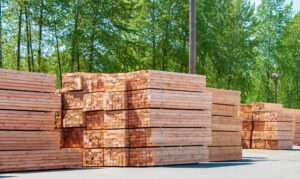 James Furney, mayor of Port McNeill, BC… is trying to stay upbeat, but his lumber town was already suffering before the threat of Trump’s trade war. …“To think that anyone is going to be insulated from what is going on with Trump would be delusional,” Furney said. “We are a forestry town and people around town are already watching their wallets and curtailing their spending, and businesses that should be ramping up now to hire summer students aren’t going to be hiring.” …In short, B.C. has plenty of wood and plenty of potential buyers for it, especially in the US, which was a $5.69-billion export market for the province in 2024, but not enough of that wood has been getting cut in recent years. That makes for gloomy days on the West Coast; a malaise that could spread to Ontario and Quebec and push the industry to the brink of collapse.
James Furney, mayor of Port McNeill, BC… is trying to stay upbeat, but his lumber town was already suffering before the threat of Trump’s trade war. …“To think that anyone is going to be insulated from what is going on with Trump would be delusional,” Furney said. “We are a forestry town and people around town are already watching their wallets and curtailing their spending, and businesses that should be ramping up now to hire summer students aren’t going to be hiring.” …In short, B.C. has plenty of wood and plenty of potential buyers for it, especially in the US, which was a $5.69-billion export market for the province in 2024, but not enough of that wood has been getting cut in recent years. That makes for gloomy days on the West Coast; a malaise that could spread to Ontario and Quebec and push the industry to the brink of collapse.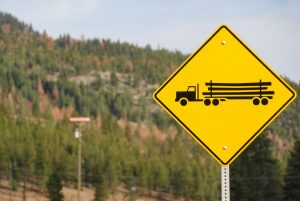 WASHINGTON – The US Commerce Department said on Wednesday it is opening a probe into national security impacts of imports of medium-duty and heavy-duty trucks and related parts into the United States. The “Section 232” investigation could form the basis of grounds to impose new tariffs on work trucks, buses, vans and other larger vehicles. Tariffs would hurt Mexico, as it is the largest exporter of trucks to the US. …Canada and Japan are also large exporters of larger trucks to the US. The Commerce Department is seeking public comment by mid-May on the extent to which domestic production of trucks and truck parts can meet domestic demand. …It also wants comments on the impacts on prices “due to foreign unfair trade practices and state-sponsored overproduction”. …Higher tariffs on commercial vehicles could put pressure on transportation costs.
WASHINGTON – The US Commerce Department said on Wednesday it is opening a probe into national security impacts of imports of medium-duty and heavy-duty trucks and related parts into the United States. The “Section 232” investigation could form the basis of grounds to impose new tariffs on work trucks, buses, vans and other larger vehicles. Tariffs would hurt Mexico, as it is the largest exporter of trucks to the US. …Canada and Japan are also large exporters of larger trucks to the US. The Commerce Department is seeking public comment by mid-May on the extent to which domestic production of trucks and truck parts can meet domestic demand. …It also wants comments on the impacts on prices “due to foreign unfair trade practices and state-sponsored overproduction”. …Higher tariffs on commercial vehicles could put pressure on transportation costs.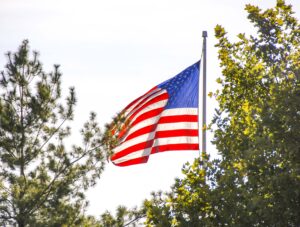 President Trump and Treasury Secretary Scott Bessent hinted at a trade-war deescalation with China, as Wall Street hoped the US was preparing for an off-ramp from the weeks-long trade battle. “145% is too high, it will come down substantially,” Trump said of the level of tariffs on Chinese imports. He said he was optimistic about trade talks, adding that he plans to be “very nice” to China to reach a deal. Trump’s comments came after Bessent told investors in a closed-door summit Tuesday that he sees a deescalation in the US-China tariff situation, prompting a US stock rally on Tuesday that carried into Wednesday. Bessent called the tit-for-tat tariffs with China unsustainable, echoing the sentiments shared with Yahoo Finance last week that he was optimistic about “clarity” on tariffs. …China said it is open to trade talks with the US but struck a still-defiant tone.
President Trump and Treasury Secretary Scott Bessent hinted at a trade-war deescalation with China, as Wall Street hoped the US was preparing for an off-ramp from the weeks-long trade battle. “145% is too high, it will come down substantially,” Trump said of the level of tariffs on Chinese imports. He said he was optimistic about trade talks, adding that he plans to be “very nice” to China to reach a deal. Trump’s comments came after Bessent told investors in a closed-door summit Tuesday that he sees a deescalation in the US-China tariff situation, prompting a US stock rally on Tuesday that carried into Wednesday. Bessent called the tit-for-tat tariffs with China unsustainable, echoing the sentiments shared with Yahoo Finance last week that he was optimistic about “clarity” on tariffs. …China said it is open to trade talks with the US but struck a still-defiant tone.

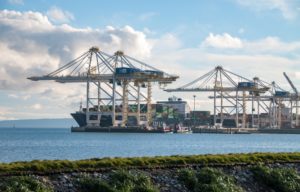 The clock is ticking on trade deals that the US will need to strike with many nations, most notably China, to avoid what Trump’s Treasury Secretary has described as an “unsustainable” tariffs war. But in the U.S. farming sector, the damage has already been done and the economic crisis already begun. US agriculture exporters say the global backlash to President Trump’s tariffs is punishing them, especially a decline in Chinese buying of US farm products, leading to cancelled export orders and layoffs. Peter Friedmann, of the Agriculture Transportation Coalition …says “massive” financial losses are already being shared by its members. …A wood pulp and paperboard exporter reported to the trade group the immediate cancellation or hold of 6,400 metric tons in a warehouse and a hold of 15 railcars sitting in what is known in the supply chain as “demurrage,” when fees are charged for delayed movement of goods.
The clock is ticking on trade deals that the US will need to strike with many nations, most notably China, to avoid what Trump’s Treasury Secretary has described as an “unsustainable” tariffs war. But in the U.S. farming sector, the damage has already been done and the economic crisis already begun. US agriculture exporters say the global backlash to President Trump’s tariffs is punishing them, especially a decline in Chinese buying of US farm products, leading to cancelled export orders and layoffs. Peter Friedmann, of the Agriculture Transportation Coalition …says “massive” financial losses are already being shared by its members. …A wood pulp and paperboard exporter reported to the trade group the immediate cancellation or hold of 6,400 metric tons in a warehouse and a hold of 15 railcars sitting in what is known in the supply chain as “demurrage,” when fees are charged for delayed movement of goods.
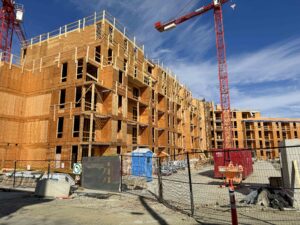 CALGARY — The one constant of Trump’s tariff plan seems to be that it is in a constant state of flux. “The time is now to start planning for what those impacts could possibly be and develop the mitigation strategies and tracking mechanisms…so that as they (tariffs) evolve in real time you are prepared to deal with them,” said Rick Moffat. Moffat moderated a webinar panel recently on legal and practical strategies for managing the impacts of the tariffs on construction projects in Canada. …Stressing the importance of detailed contingency plans that account for potential cost hikes caused by tariffs, Bulut Cinar said contractors would benefit by including “multiple scenarios” illustrating how their contingencies help manage their costs. …If contractors consider delay-causing tariffs a force majeure event, but the contract deals with tariffs differently they might be “precluding themselves” from compensation, he added.
CALGARY — The one constant of Trump’s tariff plan seems to be that it is in a constant state of flux. “The time is now to start planning for what those impacts could possibly be and develop the mitigation strategies and tracking mechanisms…so that as they (tariffs) evolve in real time you are prepared to deal with them,” said Rick Moffat. Moffat moderated a webinar panel recently on legal and practical strategies for managing the impacts of the tariffs on construction projects in Canada. …Stressing the importance of detailed contingency plans that account for potential cost hikes caused by tariffs, Bulut Cinar said contractors would benefit by including “multiple scenarios” illustrating how their contingencies help manage their costs. …If contractors consider delay-causing tariffs a force majeure event, but the contract deals with tariffs differently they might be “precluding themselves” from compensation, he added.

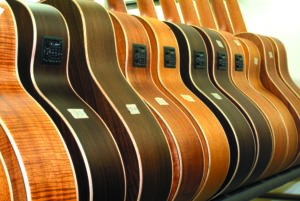 UK — Nearly half of birch wood certified by leading sustainability schemes is misidentified and does not come from the labelled country of origin, according to new testing. The analysis raises fears that large quantities of sanctioned wood from Russia and Belarus are still illegally entering Britain. New research by World Forest ID… scrutinised the accuracy of dozens of harvesting-origin claims on birch products, which had almost entirely been approved by FSC and PEFC sustainability schemes. The samples of birch – a popular hardwood used in furniture, kitchens panels and musical instruments – were labelled as originating in Ukraine, Poland, Estonia and Latvia. But tests using the wood’s “chemical fingerprint” showed that 46% of certified samples did not come from the origin on the label. …While the tests did not specify the country where the wood was grown, experts said Russia and Belarus were the only plausible origins.
UK — Nearly half of birch wood certified by leading sustainability schemes is misidentified and does not come from the labelled country of origin, according to new testing. The analysis raises fears that large quantities of sanctioned wood from Russia and Belarus are still illegally entering Britain. New research by World Forest ID… scrutinised the accuracy of dozens of harvesting-origin claims on birch products, which had almost entirely been approved by FSC and PEFC sustainability schemes. The samples of birch – a popular hardwood used in furniture, kitchens panels and musical instruments – were labelled as originating in Ukraine, Poland, Estonia and Latvia. But tests using the wood’s “chemical fingerprint” showed that 46% of certified samples did not come from the origin on the label. …While the tests did not specify the country where the wood was grown, experts said Russia and Belarus were the only plausible origins.
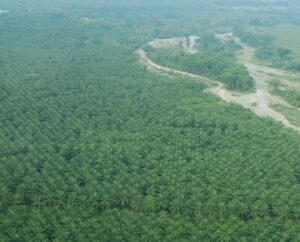 The age of forest restoration has arrived. Between 1990 and 2020, our planet lost 420 million hectares of forest cover, with grave consequences for climate, biodiversity and resource security. For years, large-scale restoration efforts were hindered by concerns around cost-effectiveness and results — but science has come a long way. Yields are higher, and the cost is lower. Advances in methods for measuring carbon storage, creating three-dimensional maps of forest, planting and surveying wildlife populations have removed technical impediments. Now, new financial models are removing the final barrier to large-scale restoration. Philanthropy alone cannot restore, rewild and conserve hundreds of millions of hectares, especially in tropical systems in the global south. …We must find ways to unlock private capital for restoration. Fortunately, commercial restoration projects are now under way across the world and forward-thinking companies are building a strong business case for investing in nature.
The age of forest restoration has arrived. Between 1990 and 2020, our planet lost 420 million hectares of forest cover, with grave consequences for climate, biodiversity and resource security. For years, large-scale restoration efforts were hindered by concerns around cost-effectiveness and results — but science has come a long way. Yields are higher, and the cost is lower. Advances in methods for measuring carbon storage, creating three-dimensional maps of forest, planting and surveying wildlife populations have removed technical impediments. Now, new financial models are removing the final barrier to large-scale restoration. Philanthropy alone cannot restore, rewild and conserve hundreds of millions of hectares, especially in tropical systems in the global south. …We must find ways to unlock private capital for restoration. Fortunately, commercial restoration projects are now under way across the world and forward-thinking companies are building a strong business case for investing in nature. The Sustainable Biomass Program (SPB) published its Annual Review 2024, capturing a year of growth, strategic progress, and continued delivery as the biomass certification scheme of choice. With 2024 marking the second year of its current three-year strategy, SBP has consolidated its position in a rapidly evolving sustainability landscape, while laying firm foundations for the years ahead. “2024 outcomes reflect a busy and productive year for SBP. We saw significant growth in certified biomass volumes and certificate holder numbers, but equally important we took proactive steps to define our contribution to global challenges, from carbon and climate to regulatory compliance and sustainability governance. With growth comes an increased responsibility to ensure that assurance and oversight of compliance are rigorously maintained,”stated Carsten Huljus, CEO of SBP.
The Sustainable Biomass Program (SPB) published its Annual Review 2024, capturing a year of growth, strategic progress, and continued delivery as the biomass certification scheme of choice. With 2024 marking the second year of its current three-year strategy, SBP has consolidated its position in a rapidly evolving sustainability landscape, while laying firm foundations for the years ahead. “2024 outcomes reflect a busy and productive year for SBP. We saw significant growth in certified biomass volumes and certificate holder numbers, but equally important we took proactive steps to define our contribution to global challenges, from carbon and climate to regulatory compliance and sustainability governance. With growth comes an increased responsibility to ensure that assurance and oversight of compliance are rigorously maintained,”stated Carsten Huljus, CEO of SBP.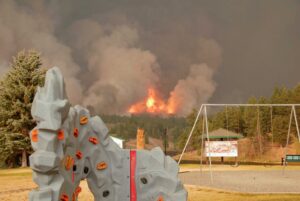 A New Jersey teenager is being charged with arson following a
A New Jersey teenager is being charged with arson following a